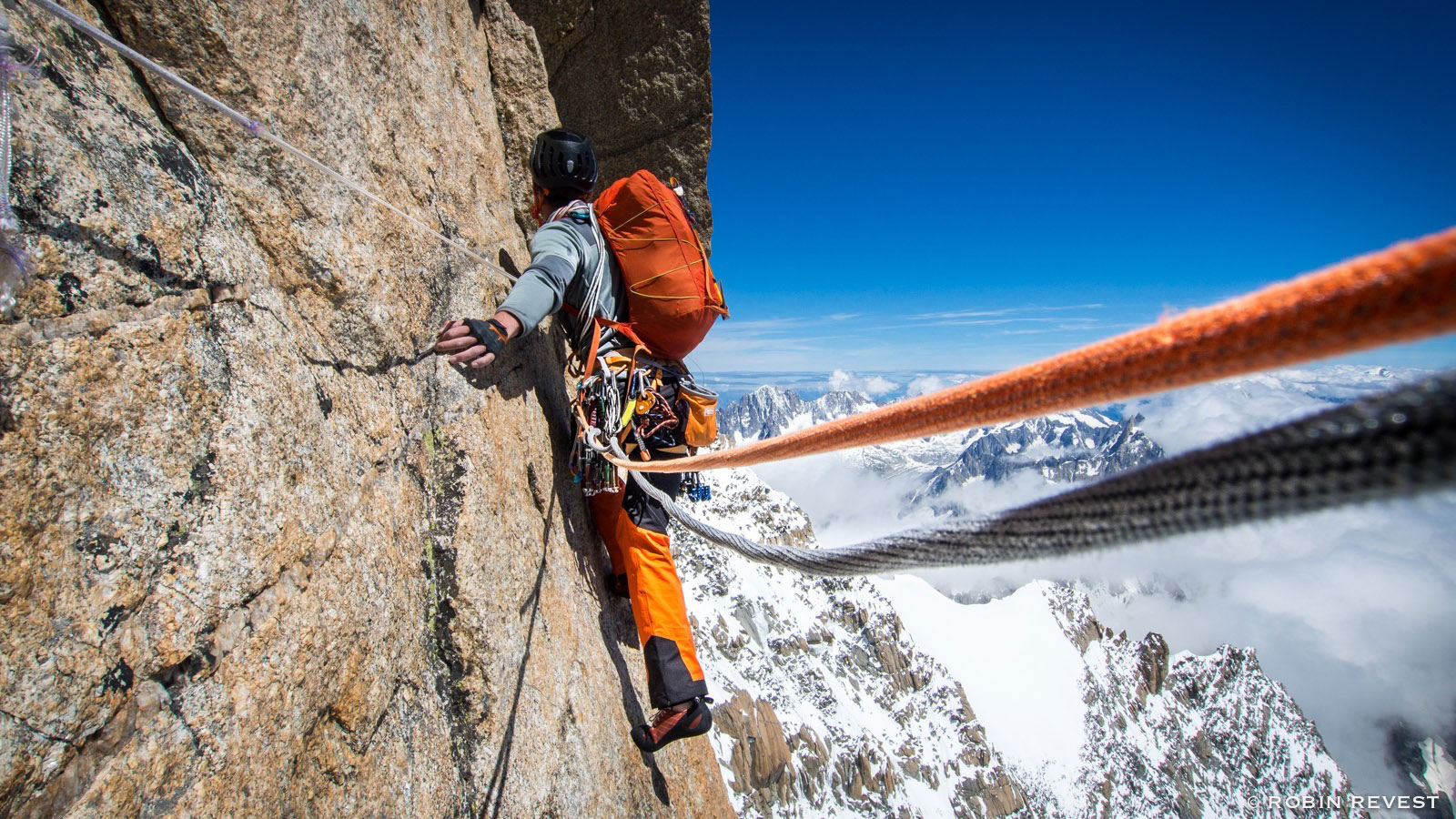How to choose a mountaineering or rock climbing rope: key parameters, standards and tips for choosing equipment.
Choosing a rope for the mountains or rocks is one of the most important stages of preparation for a mountaineering ascent or sport climbing. Not only the comfort, but also the safety of the athlete depends on the correctly selected rope model. Before buying, it is important to consider a number of characteristics: the type of rope, length, diameter, strength, impregnation, as well as compliance with specific route conditions.
Rope construction: understanding the details
Modern mountaineering ropes have a two-layer structure: a core and a braid. The core is responsible for the main strength of the product, and the outer braid protects against mechanical damage, abrasion and moisture. For mountaineering, a dense and durable braid is preferable, but for rock climbing, flexible ropes with a soft surface are more practical.
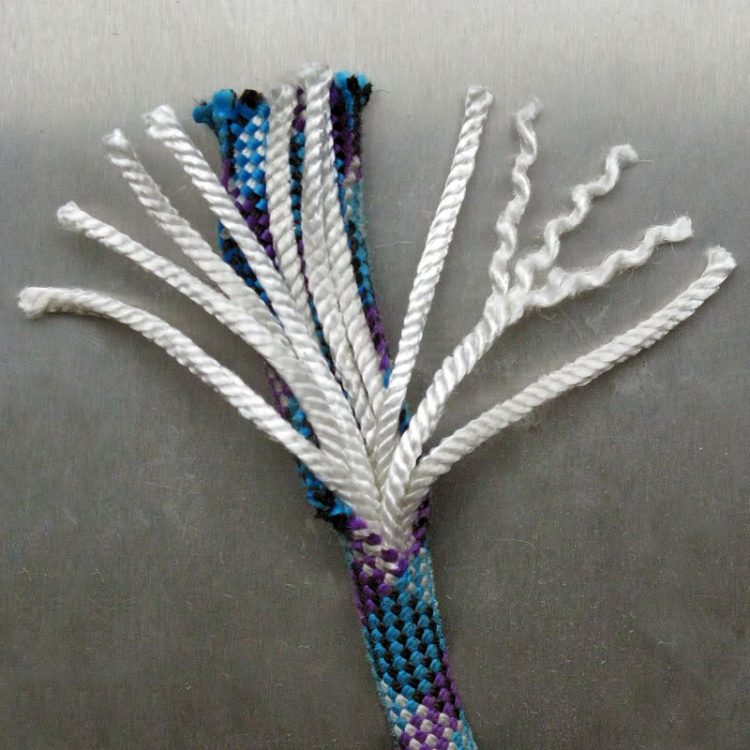
Thickness Ropes also play an important role: the thicker they are, the higher their wear resistance, but they also weigh more. Thin ropes are lighter and more convenient, but they are less durable, especially in harsh climates.
Choosing a climbing rope: reliability in extreme conditions
In high-altitude conditions with frost, wind and precipitation, the rope must have increased strength and moisture resistance. The best option is a rope with a full water-repellent impregnation of both the core and the sheath. Such rope treatment protects it from moisture, extends its service life, reduces wear and prevents icing.
For winter routes, it is worth giving preference to models with a larger diameter – such ropes are more resistant to wear. In summer, you can use lighter and thinner options, especially in cases where every extra gram of equipment is critical.
You also need to consider the weight of the athlete, the characteristics of the route and the type of belay device used. Some devices require a certain rope diameter: for example, Gri-Gri works better with thin ropes, while classic “eights” are suitable for thicker ropes.
Rope standards: single, double and twin
There are three main types of certified climbing ropes:
Single — used in classic routes and designed for belaying with one rope.

This is the most popular type of rope. They are used in a single-branch belay system when there is no need to use additional points. It can have a wide range of diameters, from 8.6 to 12 mm.
Half — used in technically difficult routes when two parallel ropes are used, each of which is clipped into separate points. As a result, two rope systems will pass between the leader and the belayer at the same time, each of which is attached to its own belay points. They have a smaller diameter and are often designated 1/2 (half).

Twin — two ropes are pulled together by the leader and clipped into one belay point. Most often used on ice routes. Have the smallest diameter.

Each standard has its pros and cons, and should be chosen based on the complexity of the route and the level of training of the team.
Rope length and diameter: what to look for when choosing
For classic ascents, a rope 50 meters long is considered the most universal. Longer ropes (up to 80 meters) are more often chosen for ice routes and rock walls. The diameter usually varies from 8.6 to 10 mm, with thicker ones suitable for harsh conditions, and thin ones for short but technical routes.
For indoor training, ropes 30-40 meters long are usually chosen. Previously, athletes often chose 50-meter ropes, but with the popularity of long routes in Europe and some parts of Asia, they began to use long ropes.
We also recommend choosing a long rope from a practical point of view. The first three meters from the end of the coil are the most worn out. This place can be very worn and unusable, while the rest of the coil is still in excellent condition. In a long coil, you can cut off this section and use the rope for another season, whereas with a 50-meter coil, this trick won’t work.
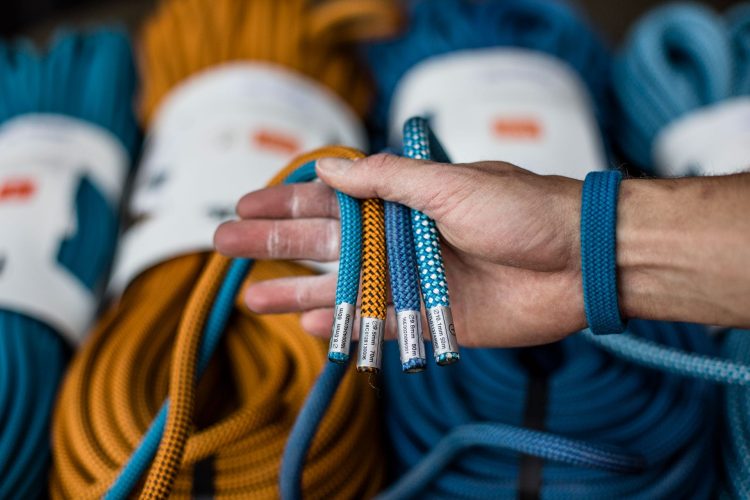
How to read the information on the tag: technical characteristics
When choosing a rope, it is important to carefully study the technical information on the tag:
- The force of the jerk is an indicator that reflects how much the rope softens the fall.
- The number of falls – how many times the rope can withstand a fall from a height before losing its characteristics.
- Dynamic and static elongation – is responsible for the degree of stretching under load and during a fall.
- The displacement of the sheath and the ability to tie knots – determine flexibility and durability.
The rope must be certified and have the UIAA or EN marking.
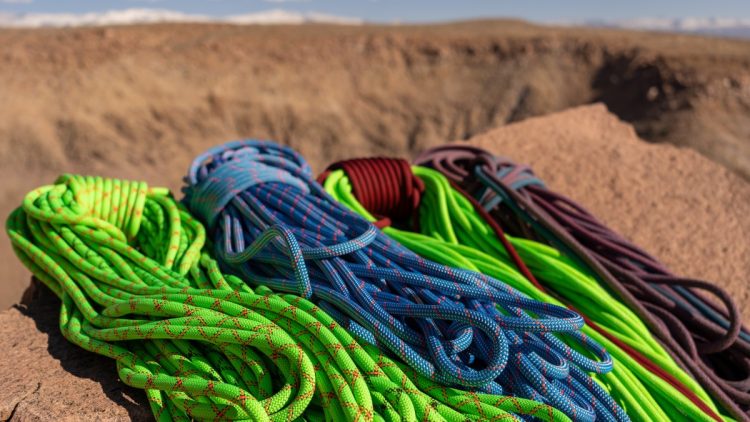
Rope impregnation
Impregnations are necessary for resistance to moisture. Impregnated rope is more durable, dirt does not get into it, it does not get wet from moisture and snow.
There are such types of impregnations:
- Standard – treatment of threads from which the rope is woven.
- Partial – impregnation of the braid.
- Full – impregnation of the core and braid.
For sport climbing in climbing wall conditions or in warm weather, you should not think about impregnation. An untreated rope provides a better grip with your hands and prevents it from slipping in the belay device.
Sport climbing
Simpler ropes are used for indoor or dry rock climbing. The important parameters here are diameter (9.4–10.5 mm), length (30–70 m depending on the route height), strength, and compatibility with belay devices. Impregnation is not necessary, and for better grip on the hands, models without treatment are often chosen.
It is also desirable that the rope has a marking in the middle – this makes it easier to descend and pack.
How to choose a rope for sport climbing
Sport climbing takes place indoors or on dry rocks during the warm season. Gri-Gri, Sticht washer, ATC are usually used for rock climbing. When choosing a rope for rock climbing, you should pay attention to the following parameters:
- Diameter. The most popular ropes range from 9.4 to 10.5 mm.
- Length. Depends on the height of the wall to climb.
- Marking with the safety standard. For example UIAA.
- Tear force. For rock climbing we recommend from 7 toH and above.
- Elongation. We recommend dynamic elongation of 30%-40%.
- Material. Nylon or polyester are suitable for rock climbing.
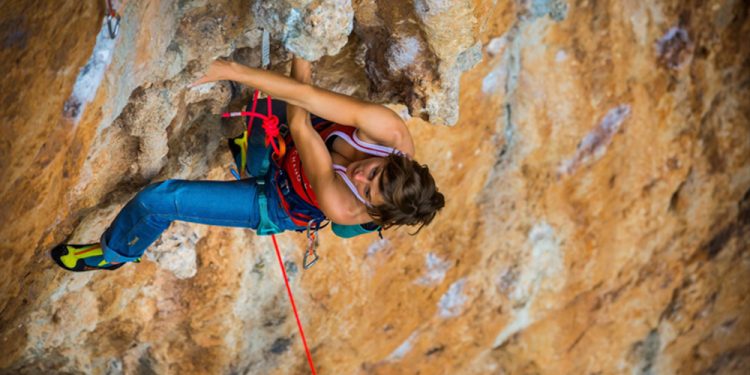
Wear and replacement ropes
Rope wear depends on the operating conditions. Mountaineering is characterized by the sheath being worn away by rocks, while in rock climbing the rope often suffers from constant jerks (climber falls). Visual signs of wear are fuzziness, loss of rigidity, and damage to the sheath. Such ropes are subject to immediate replacement.


Conclusion
Choosing a mountaineering or rock climbing rope is a task that requires attention to detail. A reliable rope is a guarantee of safety. It is important to consider the route features, weather conditions, equipment weight and insurance type. Consult with experienced specialists and select a rope for a specific task, not a universal one – this will help you avoid mistakes and make the ascent as safe as possible.
Source of the article: alp.org.ua

